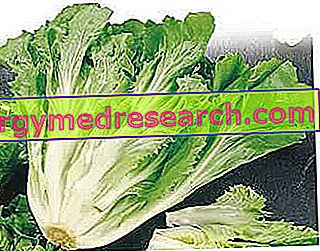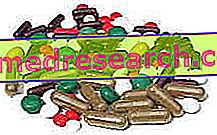In common language, endive means a type of "salad" (leaf vegetable) with an open "clump" or "sprout" shape; the endive is white, yellow and (only at the top of the head) tending to green.

The most common varieties of endive differ in latifolium, or rather called scarlet, and crispum, known as riccia . There is a variety of endive which, through a process of "forcing or artifact", acquires a "stem" or "cigar" shape, a crunchy consistency, and a sweeter but less bitter taste; it is the Belgian endive or Brussels chicory .
Below, we will better describe the most popular endive types1.
Curly endive

- Early curly endive: Riccia of Italy, Riccia romanesca, Riccia cuor d'oro and Mantovana
- Late curly endive: Riccia in winter, red from Moncalieri with white or pink coast.
Escarole endive
It is a variety of autumn-winter endive.

- Endive of Bergamo: it is an endive typical of the area around the walls of the Upper Town of Bergamo and is distinguished from the other varieties by the particular process of "whitening" of the inner leaves. After sowing in July, in October it is tied to allow the internal leaves to remain totally sheltered from the light; with the onset of cold, the endive plants are then transferred to the basements and left to mature.
- Radicchia endive of Lucca: it is a variety of endive limited to the province of the city of Lucca which assumes an intense green color and can be used both raw and cooked.
Nutritional composition of the Endive - INRAN Food Composition Tables | ||||||||||||||||||||||||||||||||||||||||||||||||||||||||||||||||||||||||
 | ||||||||||||||||||||||||||||||||||||||||||||||||||||||||||||||||||||||||
Nutritional values (per 100 g of edible portion) | ||||||||||||||||||||||||||||||||||||||||||||||||||||||||||||||||||||||||
| ||||||||||||||||||||||||||||||||||||||||||||||||||||||||||||||||||||||||
Belgian endive or Brussels chicory
The Belgian endive or Brussels chicory is a variety of chicory that undergoes a particular process of forcing or artifact. His discovery took place in the city of Brussels (XIX century AD) in a completely casual way: a farmer left chicory roots in the cellar and realized that these sprouted with almost totally white leaves; later, the variety was improved by a botanist and marketed for the first time in France.

It is therefore possible to produce Belgian endive at home by following this procedure: 1. Take the roots with the roots from the ground and leave them stacked for 4-5 days in the open air; 2. Remove all the green leaves and shorten the roots; 3. Place the leaves in defoliated standing and side by side inside a caisson with river sand; 4. Place the box in a dark room with a temperature between 5-10 ° C; 5. To improve productivity, gradually increase the temperature and ventilate the room periodically.
Nutritional characteristics
Endive is a vegetable with a very modest energy supply; it contains very little fats, proteins and carbohydrates, while it boasts an excellent quantity of water, fiber (in particular inulin), mineral salts and vitamins.
Among the contributions of mineral salts stand out the content of potassium, iron and calcium, while on the water-soluble vitamins there is no lack of riboflavin (vit. B2), niacin (vit. PP) and ascorbic acid (vit. C); among the fat-soluble vitamins we can appreciate a remarkable intake of equivalent retinol (carotenoids - pro vit. A).
Belgian Salad and Speck Rolls
X Problems with video playback? Reload from YouTube Go to Video Page Go to Video Recipes Section Watch the video on youtubeBibliography:
- Vegetables in Italy - L. Cabrini, F. Malerba - Italian Touring Club - page 99
- Food composition tables - National Research Institute for Food and Nutrition (INRAN).



